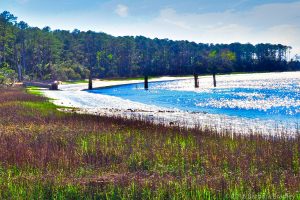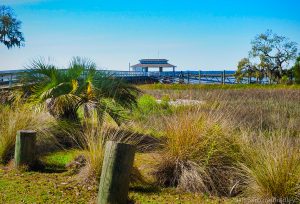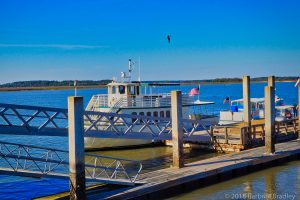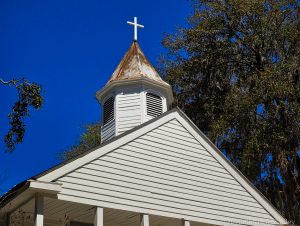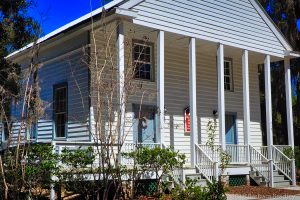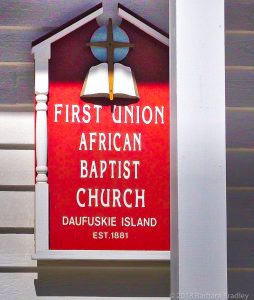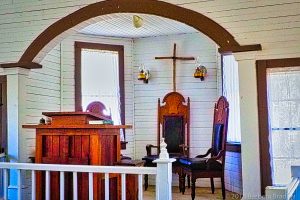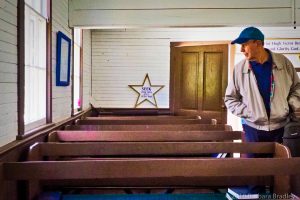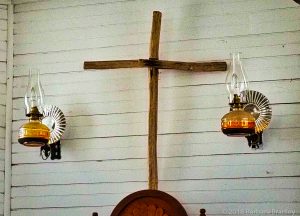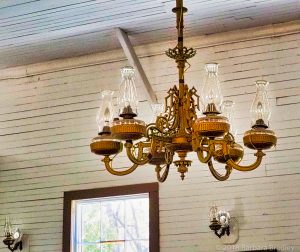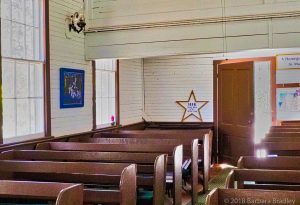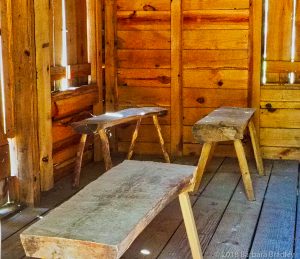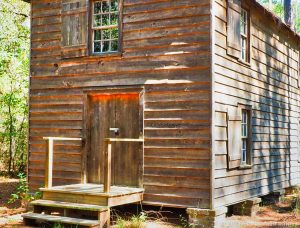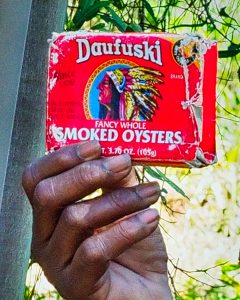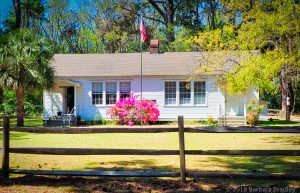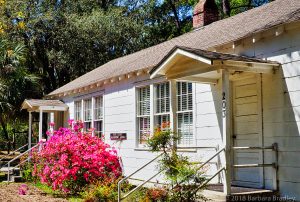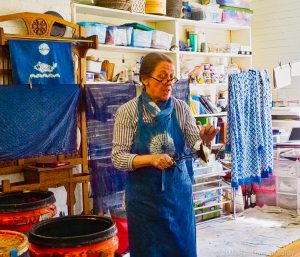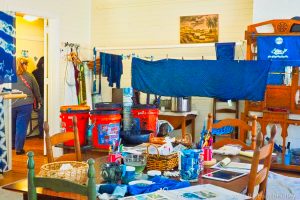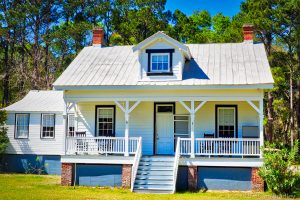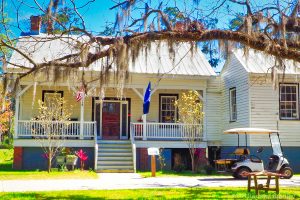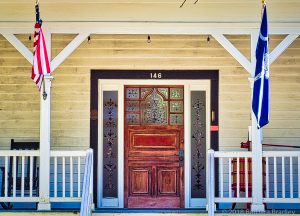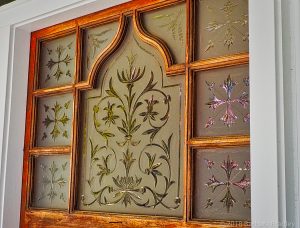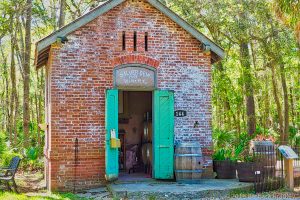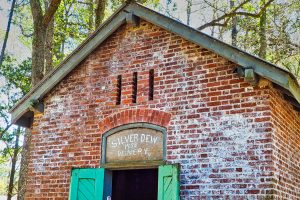If you know the books or movies entitled, “The Great Santini” and “The Prince of Tides,” you know of author Pat Conroy. After graduating from college at The Citadel, he took a job in 1969 teaching in a one-room schoolhouse on the isolated island of Daufuskie. Daufuskie is a small island about three miles off the South Carolina mainland and, to this day, there are no bridges to the island. It is the southernmost inhabited sea island in South Carolina.
A young white man, Conroy was enraged by the substandard education being given the native children on the island. He spent a year teaching the students about the wider world (even taking them to Washington, DC). After one year, he was fired for “unconventional” teaching practices, including his refusal to use or allow corporal punishment on his students. Conroy wrote, “The Water is Wide” about his experiences with his students on Daufuskie Island.
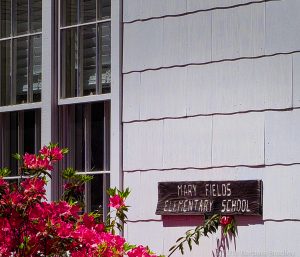
It seems most visitors I came into contact with (there weren’t many) came to the island because they have read Conroy’s books and know his history of teaching on Daufuskie.
While we don’t recommend this island for children or grandchildren, (we think they would be bored since the island’s culture and historical significance is fairly intangible), you will love it!
HOW TO GET THERE
Daufuskie Island is only accessible by boat or ferry which made the whole day an adventure for me! I made my way to the Daufuskie Island Ferry at the Buckingham Landing on Hilton Head Island for a 10 a.m. departure. They ask passengers to arrive at least 30 minutes prior to the departure time.
|
|
|
The ferry runs 8 times each day and has the same schedule every day. Just don’t miss the last scheduled ferry back to the mainland at the end of the day! Parking at the ferry fills fast. There is no charge for carry-ons or bikes. Tickets are $35.
Make reservations for the Daufuskie Island Ferry (843-940-7704) or on the Daufuskie Island website. You will get an email confirmation. I kept it handy although no one ever asked me for a ticket. The trip to Daufuskie takes about an hour one-way.
ONCE YOU ARRIVE
You will arrive at Melrose Landing. Unless you want to walk the 5-mile island, you need to have reserved a bike or golf cart to get around. If you have rented a house for an extended time, some will include a golf cart in the rental arrangement. I was only staying a day and wanted a reserved golf cart to use after my morning tour so I could explore on my own. There are options for reserving a golf cart that include:
- (www.daufuskietransit.net).
- Bloody Point (843-341-5566)
- Daufuskie Carts (843-341-2327)
- Island Carts (843-505-3937)
- Tour Daufuskie (843-842-9449)
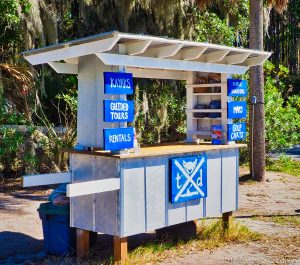
THE MOST RURAL INHABITED PLACE WE HAVE EVER BEEN
Cars are allowed on the island but are rare on the roads. Golf carts, bikes or walking are the main means of travel on Daufuskie. There are no sidewalks, gas stations or grocery stores. We only found one paved road. Most of Daufuskie remains a forest. A police car actually takes the ferry over every day around noon for lunch and a quick look-see before heading back to the mainland!
Electricity came to Daufuskie only about 25 years ago. Phone lines came the year after. No drivers licenses are required and backyard wells provide water.
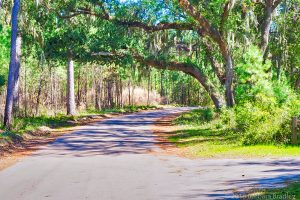
Other than inside a couple of upscale private golf clubs, most of the homes are small and unassuming. Many homes on the island have door jams and window frames painted light blue. This color is called, “heaven blue” and is meant to keep “haints” (evil spirits) from entering. (Some people call this color, “haint blue.” Until fairly recently, residents rarely went off-island and lived off crabbing, fishing and what they could grow themselves in gardens.
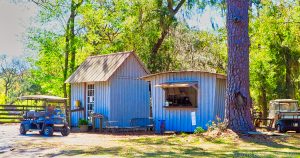
WHY WE WANTED TO VISIT
My own curiosity about the island was motivated by history. This island is intriguing with thousands of years of history, residents who cherish the island’s isolation and a Gullah culture which is alive and well. Gullah people are African-Americans who live in the low country of South Carolina and Georgia-a group of only about 125,000 who speak Gullah (a combination of West African and Creole).* Only 400 people still live full-time on the island today. My goal was to learn about Gullah and Geechee culture and the language.
The South Carolina sea islands were my focus for learning about Gullah culture. Since early in the Civil War, the Union presence in nearby Beaufort caused white plantation owners to flee the islands and leave their slaves behind. After the war and once emancipated, freedmen stayed on or returned to the islands they had known so well. Daufuskie’s remote location allowed the Gullah culture to flourish and survive.
According to Wikipedia**,
The Gullah language is a legacy of the original slaves and later laborers who remained once the plantations folded. The low country was remote until the mid-20th century, but the isolation of Daufuskie created the perfect climate for the language and manners of the Gullah people to remain remarkably well preserved. The language is a colorful and rhythmic blend of West African and rural English dialect that is becoming increasingly rare to hear. Daufuskie is the center of the Gullah/Geechee Cultural Heritage Corridor.
TOURS
You can do a self-tour, of course. Once you have a map in hand and get directions straight, you will not get completely lost. I got a little turned around, but saw more island that way!
I wanted to learn about Gullah culture so signed up for Sallie Ann’s Native Gullah Tour. You may have seen Sallie Ann Robinson on TV. She is a sixth generation native and has been on programs like QVC and The Food Network. She has also been featured in National Geographic, Southern Living and other magazines. She is a character! You will always have a smile on your face with Sallie Ann!
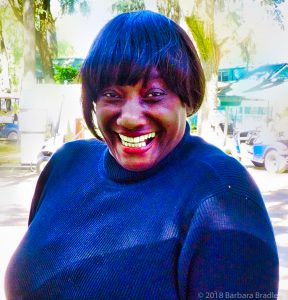
One of Sallie Ann’s tour options includes the price of the roundtrip ferry trip and use of a golf cart, if you want one. I opted for that option and the tour company made all the transportation arrangements for me ahead of time. Golf carts are approximately $54 (2019) per half day. Sallie Ann’s tour is 2.5 hours long and is given on Tuesdays, Thursdays and Saturdays.
Aside from the fact that Sallie Ann is the only native tour guide on Daufuskie, many people take her tour because she is the real-life “Ethel” in Pat Conroy’s book, “The Water is Wide.”
I strongly recommend packing a lunch and a drink. I did not and was unable to eat all day. While there are restaurants on the island, I found them closed.
Restaurants are either:
- Lucy Bell’s Cafe or
- Old Daufuskie Crab Company Restaurant
If you go by the school where Pat Conroy taught, there is a coffee bar and you can purchase cookies at “School Grounds Coffee” inside.
THINGS TO SEE
Sallie Ann is incredibly proud of her heritage and the island. While I had the expectation of learning Gullah history, what I did learn was about Sallie Ann’s daily life growing up on Daufuskie Island. At first, I was disappointed that my expectations were off. The more I thought about it, though, the more I knew I was getting a first-hand account of Gullah life in the 1950s and 1960s.
Many learning moments were waiting for me at the First Union African Baptist Church, established in 1881. It is the only active church on Daufuskie Island. The church is Daufuskie’s oldest building.
|
|
|
|
|
|
|
|
|
|
|
|
This “Little Bell Box” was discovered in 1996 during the restoration of the 1884 First Union African Baptist Church. The bell is marked, “Nat. Baptist Pub. Board” and is undated although the Board began operations in 1896. The inscription on the box reads, “Sunday Chool Bell, Berlong to God.” Drawings are of a church steeple with a bell, a palmetto frond, as well as a slave becoming a crow and flying away to freedom. A fourth drawing, a mysterious circular symbol, perhaps has African roots and awaits further interpretation. “The Little Bell Box” is believed to be the sole surviving piece of Freedman’s art on Daufuskie Island. ***** The box is now in the Island Museum.
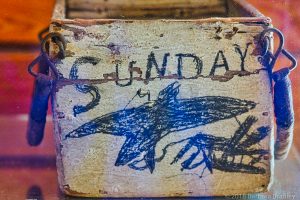
Directly behind the church is the Praise House.
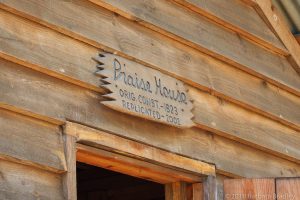
|
|
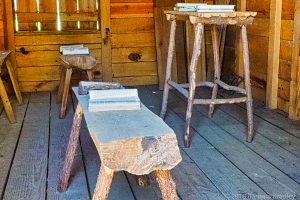
|
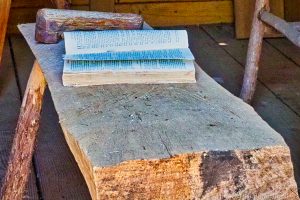
The McIntosh County Shouters are from Georgia but are thought to be the last group performing Gullah Shout Rings.
Please visit: www.mcintoshcountyshouters.com
| https://youtu.be/bXwFnVozGD0
Source: YouTube, McIntosh County Ring Shouters. Blow, Gabriel. Published on May 30, 2015. Provided to YouTube by Smithsonian Folkways Recordings. Public, 2004 Smithsonian Folkways Recordings/1984 Folkways Records. |
Here is what the sign on the Praise House said:
Just after sunset a slender black soul would light a fire outside the door of the weathered clapboard ‘Praise House.’
They came quietly to this only gathering place they knew, to sit on the backless half-log benches outside and inside along the wall.
At first there was silence…then one person, probably a woman, began softly to ‘hum’ a well known tune that had its origin in Africa and would eventually become the basis of a well-known spiritual, that expressed their primitive religious faith. As others joined in, and the music escalated, hands clapped and feet began to stomp.
These African-based expressions became known as “Praise Shouts.”
This setting was the forerunner of the First Union African Baptist Church on Daufuskie Island, South Carolina.
The Praise House setting took place circa 1830 and marked the first social setting for the African during plantation life. Although its appearance was that of a Christian concept, the African found it difficult to embrace a “belief” of human kindness absent example.
Within the Praise House the African created, for the first time, a form of government and social order of membership and community to deal with all issues of life. This actually happened after the Civil War.
Most services were held on Thursday evening with Praise Shouts and scripture readings. It was not necessary to be led by a “man of the cloth.
In early June of 2019, the Gullah people were finally credited with the origination of the song, “Kumbayah.”
HOW GULLAH PEOPLE SUPPORTED THEMSELVES
After the Civil War, Gullah people on the island purchased small plots of land or worked for landowners. The boll weevil destroyed the cotton fields in the early 1900s.**
Logging and the Maggioni Oyster Canning Factory provided jobs for the island at the turn of the 20th century.***Oysters continued to be harvested and shucked on Daufuskie after the cannery closed and were shipped elsewhere for processing. Daufuskie Island oysters were sold world-wide.
Pollution in the Savannah River closed the oyster beds in the 1950s and Gullah people began to leave Daufuskie for better opportunities. By the 1980s the population had decreased from a high of approximately 2,000 to fewer than 60.****
|
|
|
THE FAMOUS SCHOOLHOUSE
The two-room Mary Fields Elementary School was built for the island’s native children in the early 1930s. Leftover wood was used to make desks for the students. This is the school where Pat Conroy taught. The school was integrated only in 1962. A new elementary school was built on Daufuskie in 1997 and the Mary Fields School was closed. We were able to visit the school to take a closer look and hear stories about Pat Conroy from “Ethel” in his book-Sally Ann Robinson.
|
|
|
|
|
|
There’s another one-room school on the island. This school is the Jane Hamilton School (now the Gullah Learning Center & community library). Cooper River children attended school in the Mt. Carmel Baptist Church No. 1 until it was destroyed by the hurricane of 1940.***** The Jane Hamilton School was built then and was open for ten years. Then children were given transportation to the Mary Fields School.
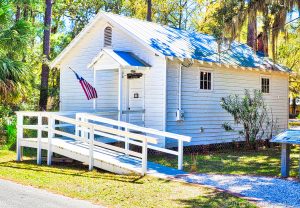
VISIT BLOODY POINT
Bloody Point saw three skirmishes (beginning April 15, 1715) between the Yemassee Indians and settlers. Blood in the water from those battles gave the place its name. Bloody Point is the southernmost inhabited point of South Carolina. In 1882, the U.S. government paid $425 for land for a Bloody Point Light. The light had a brass stand and wind-up clock to turn on the light. The synchronized lights guided ships into the Savannah River Channel from 1883-1922. Go see the artifacts in the Lighthouse Museum!
|
|
|
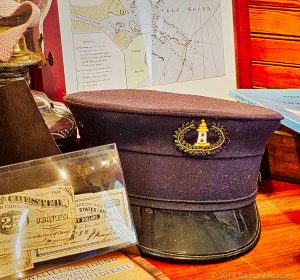 |
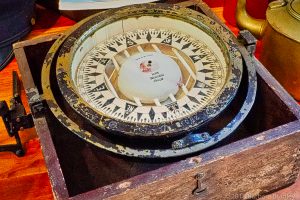 |
|
|
|
The Silver Dew Winery building was known during the time the Lighthouse operated as a “wick house.” Wick houses were places used to store oil, wicks and even the lamp for the Bloody Point Lighthouse. The tiny building was built in 1883.
In the mid-1900s, the building was converted to a winery by Arthur “Papy” Burn. The first mention of Silver Dew was when Pat Conroy wrote about it in “The Water Is Wide,” published in 1972.
|
|
|
The beach at Bloody Point was totally deserted the day I was there. It was beautiful.
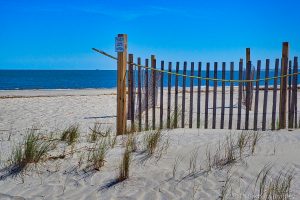 |
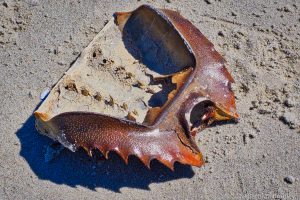 |
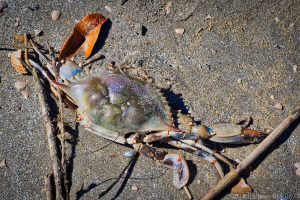 |
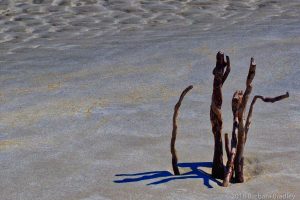 |
THERE ARE CRAFTS & ART ON THE ISLAND!
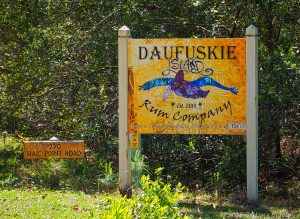
If you enjoy rum, you are in luck. The Daufuskie Island Rum Company offers tours Wednesdays through Saturdays for $7. The owner has a variety of rum he calls “Fuskie Fire.” Let me know what it tastes like!
The indigo-dyed fabrics we saw being made at the Mary Field School, is the work of Daufuskie Blues.
The Iron Fish Gallery & Studio was begun in 2001 and features coastal sculptures.
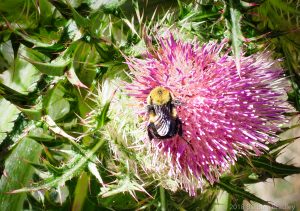
Daufuskie Island is the most unique place we have ever seen in the United States! It is almost eerily rural and like a different world. There are copperheads in the swamps, a universal trust among the residents, Native American and Creole ancestry and an isolated but gratifying way of life. Everyone knows everyone else on the island. There is history-but of specific people-the Gullah-who inhabited the place. I promise you that, if you go, you will never forget Daufuskie.
*Wikipedia.org Daufuskie Island
**Ibid
*** Daufuskie Island Historical Foundation brochure. P.O, Box 52, Daufuskie Island, SC 29915. www.daufuskieislandhistorialfoundation.org
****Ibid
*****Ibid
